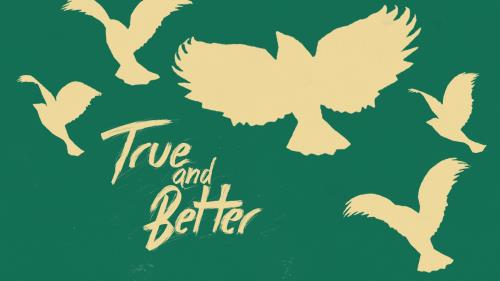-
Confronting Mammon
Contributed by Robert Grey on Nov 28, 2017 (message contributor)
Summary: Mammon is a very powerful force in the world today that ties people into a financial system that prevents the people of God from effectively preaching the Gospel. The story of how Abraham tithed after rescuing Lot gives some important principles.
Background.
Abraham had two brothers, Nahor and Haran.
They and their father Terah lived in Ur of the Chaldees. This city, famous for the worship of the Moon God, was located on the banks of the Euphrates near the Persian Gulf, just before the Tigris River enters into it.
In Ur, the Stela of Ur-Nammu has the crescent symbol placed at the top of the register of gods because the Moon-god was the head of the gods. Even bread was baked in the form of a crescent as an act of devotion to the Moon-god. The Ur of the Chaldees was so devoted to the Moon-god that it was sometimes called Nannar (the Sumerian name for the God) in tablets from that time period.
While the family lived there, Haran died. It seems that as a result, Abram and Nahor shared the responsibilities of taking care of Haran’s family. Abram took Haran’s son Lot under his wing, while Nahor married Nahor’s daughter Milcah (Gen 11:28-31).
When Abram’s father left for Canaan and settled in Haran (possibly named after his dead son), he took Abram and his family with him. Since the Bible does not mention Nahor, it seems that he remained in Ur. Later, (Gen. 22:20) the Bible implies that Nahor moved from Ur to the city of Nahor, and it is there that Abram’s servant finds a wife for Rebeccah.
The city of Nahor, which was Rebeccah’s home (Gen. 24:10) where Abraham sent his servant to bring her for his son Isaac’s wife, occurs often as Nakhur in the Mari tablets, discovered in 1935 and belonging to the eighteenth century B.C. The Mari references and Assyrian records of the seventh century B.C., where Nahor occurs as Til-Nakhiri ("the Mound of Nahor"), located in the Balikh Valley below Haran.
It is in the city of Haran that Abram hears the call of God to move to Canaan (Gen. 12:1).He left with his wife and servants, and all his goods
Abram also took Lot with him (Gen. 12:5).
The decision
After their trip to Canaan, Abram and his company left for Egypt, since there was a famine in the land. By the time they returned their group had grown so much in size that strife arose between the servants of Abram and the servants of Lot (Gen. 13:6). Therefore, they made a decision to deal with that problem.
They made that decision near Bethel.
Bethel lies on an ancient route known as "The Way of the Patriarchs". This road, also called the "Ridge Route" (because it followed a key mountain ridge stretching for a distance of 50 miles), traveled south from Shechem through Shiloh, Bethel/Ai, Ramah, Gibeah, Jerusalem, Bethlehem, and Hebron. This route appears continuously in the Biblical text.
The land of Canaan rises up from the Mediterranean into a row of mountains . Near Bethel are Mount Ebal (940m.) and Mount Gerazim (881 m). Bethel is about half way between the Lake of Galilee and the Dead Sea. It is no surprise then that Lot was able to see the entire watershed of the Jordan River.
And Lot lifted up his eyes, and beheld all the plain of Jordan, that it was well watered everywhere, before the LORD destroyed Sodom and Gomorrah, even as the garden of the LORD. Then Lot selected for himself all the plain of Jordan; and Lot journeyed east: and they separated themselves the one from the other (Gen. 13:10-11).
When David joyously danced before the ark (karar 02769), he whirled about in circles. The word for plain derives from this thought (kikkar 03603). Its root meaning implies a circle and all that is in it. The word describes a circle, a talent (a round valuable coin), and a round loaf of bread.
The implication here is that the plain of the River Jordan was a cause of celebration, was of value, and was a source of food.
Lot’s choice of this area therefore held the promise of great joy, great wealth, and great comfort. From the Lake of Galilee all the way south to the Dead Sea, the entire area of this valley was available to Lot and his family, his servants, and his flocks. Meanwhile, Abram remained in the Hill country of Shechem, eventually settling in Hebron.
Consequences
Abram settled in the land of Canaan, and Lot settled in the cities of the plain, and pitched his tent up to (aead 05704) Sodom. But the men of Sodom were wicked and sinners before the LORD exceedingly. Moreover, the LORD said to Abram, after Lot separated from him, "Now lift up your eyes, and look from the place where you are, northward, southward, eastward, and westward For all the land which you see, I will give it to you, and to your seed for (aead 05704) ever (up to time out of mind) (Gen. 13: 12-15).

 Sermon Central
Sermon Central

